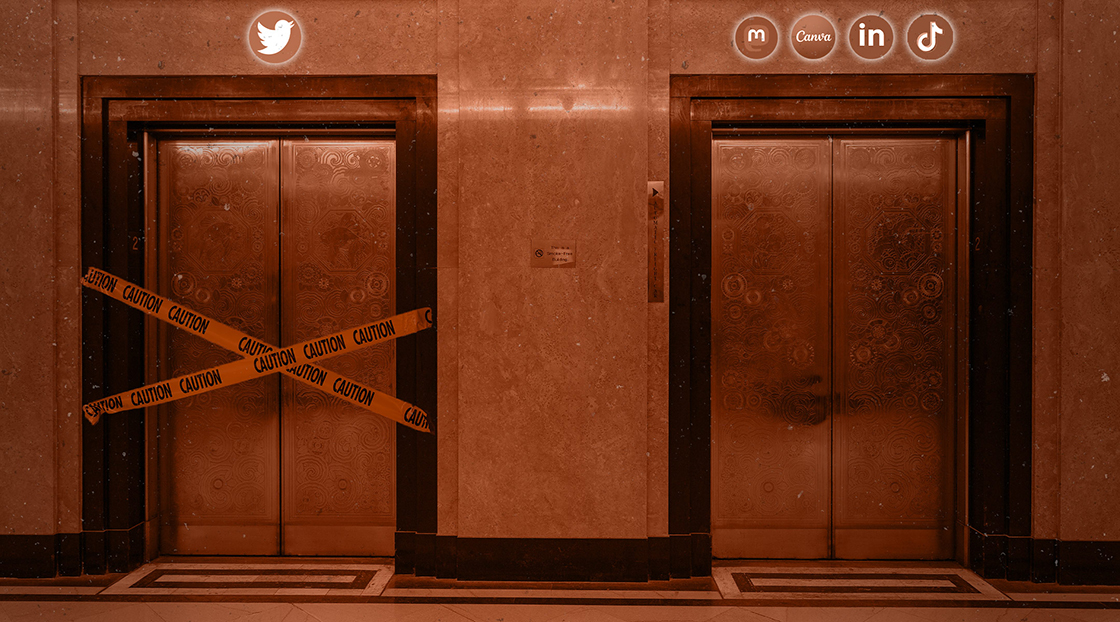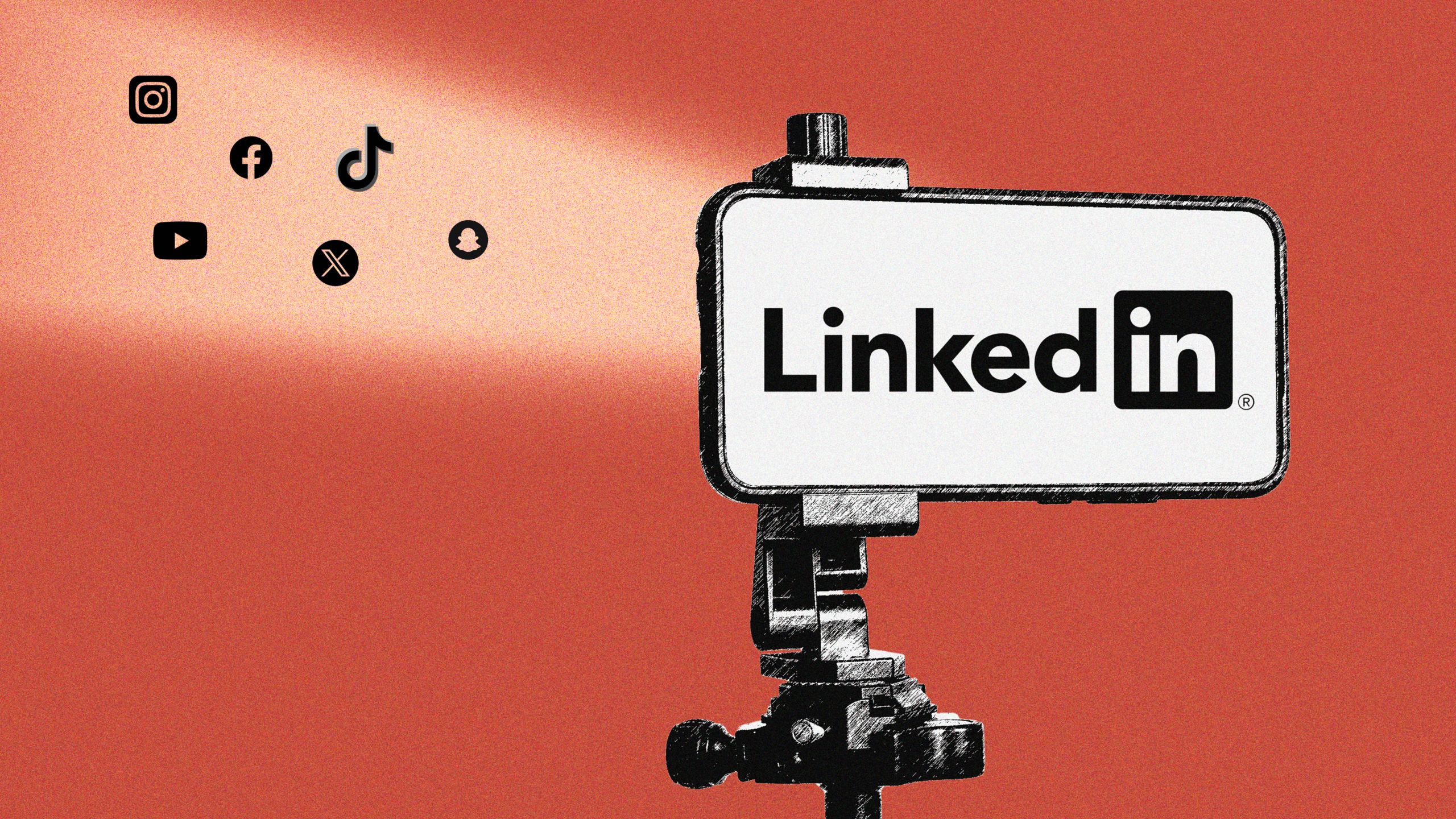Twitter’s role in the social media universe is changing by the hour. Campus partners, leadership, faculty, students, all higher education communities will in some way be looking for guidance from their social networking experts over the next weeks. All with the same question: what do we do about Twitter?
Whether you fear the platform’s imminent implosion, you’re morally opposed to banned users being allowed back on the platform or have any other practical or ethical concerns about Twitter’s management and future, institutional leaders are having to tackle a question that seemed far–fetched only a year ago. What comes after Twitter for higher ed marketing and communications?
Tomorrow does.
As another day of Twitter 2.0 dawns across the world, here are five things higher education social admins can do tomorrow.
Number two on this list is a bit about Mastodon. If that’s of interest, skip right to there. And if that’s number two, what’s number one? Read on and find out.
5. Pause and Peruse
“I’m not standing still, I’m lying in wait.” — Hamilton, “Wait For It”
Some higher education communications teams may have made a strong and successful commitment to Twitter—thousands of followers, beautiful interactions, reliable customer service DMs, a network of professionals and interested community members. That’s not easy to toss aside. So, don’t.
Hold off on posting new content or content that would not fit beside whatever things will be emerging on Twitter in the short term. As things settle down on the platform and it adjusts to 2.0, to being “hardcore” or whatever shape it takes, the patient users will adapt to the new form.
The “peruse” part of this list entry is to lean into Twitter’s social listening power while pausing. Take stock of what voices are on the platform and which aren’t. Look back at social strategy documents for a reminder about why Twitter was part of a storytelling toolkit in the first place. Twitter 2.0 may be an even better fit for some higher education content. Watching and waiting will have been an enviable stance.
4. YouTube Refresh
“If you can lean, you can clean.” —every food industry staff manager ever
No matter the state of the institution’s YouTube channel, there’s always something to do on that platform. Take a deep dive into the analytics to find some interesting and valuable data, rearrange some playlists and delete or hide old content.
No Twitter frees up needed time to spend in the YouTube Studio adding end screens to videos. End screens are the thumbnails suggesting the next video for the user to watch that show up while a viewer is engaging with the current content. This can make a huge difference for the video consumer’s experience and help the marcomm team shape a prospective student’s trip down a YouTube rabbit hole. You can suggest classroom videos at the end of tour videos, tour videos at the end of student profiles and last year’s moving and uplifting commencement video at the end of student profiles.
Those minutes each day that are currently not creating and curating for Twitter can be spent putting a little polish on YouTube content. Admissions teams will be most appreciative.
3. It’s Taylor Time
“We could all learn a lot from Taylor Swift.” —Liz Gross on LinkedIn
Here in the center of the list could be the most important thing that teams can put more focus on post-Twitter. Liz Gross, CEO of Campus Sonar, tells anyone and everyone who will listen that Taylor Swift’s practice of paying close attention to what her fans want is a big lesson for higher education communicators.
What this looks like in action (to paraphrase Dr. Gross) is to stop posting content and to start posting comments. All the time that would be spent on Twitter can now be spent adding “That’s such great news, congratulations! Can’t wait to see what you do next” on Instagram content from your community members who are celebrating an accomplishment. On LinkedIn posts about new jobs or internships, you can comment, “A great example of what’s possible with an [institution’s] education. Thank you for sharing about this work.”
These comments, this engagement in the deepest meaning of the word, fosters an authentic, meaningful, and valuable connection between the brand and community members of all kinds. The person who posted the message feels seen, encouraged and supported by the institution. They may even post a thank you message of their own, “Never could have done it without attending [institution].” That’s earned media that could have a real impact on enrollment. The lesson from Taylor is to really absorb what your fans say, respond to those messages and reap the benefits.
2. Mastodon
“Mastodon isn’t a company—it’s a piece of open source software with a community built around it.” —Wired, “How to Get Started on Mastodon,” Nov. 16 2022
There are dozens of articles published in just the past two weeks about getting to know Mastodon as a social network. However, it’s incorrect to call Mastodon a social media platform because it’s not. It’s a true social network, a federation of independent servers, just like Star Trek’s Federation. In that fictional universe, individual worlds trade with and protect each other, and with the right attitude, anyone can join. That’s also a rough description of Mastodon.
Here’s a quick look at this space from a bird’s-eye higher-education communications perspective.
- Communities. First, users are asked to join a community right off the bat. This choice is necessary, but it can be changed later. Migrating an account is part of Mastodon. As is having an account that feeds to another Mastodon alias account, so if there’s interest in switching servers, that’s possible. The server choice is what becomes the domain name included with the user name (nursechapel@enterprise.xyz would be an example). Let go of the anxiety to find the “right” one and simply select a general, open server to start an initial Mastodon account. Users can belong to several servers.
- Content. This will be the most difficult adjustment for higher education communicators. After years of training, best practices and familiarity with different brand voices for audiences throughout Meta products or Twitter, that empty box on an empty Mastodon account that’s asking for a post seems somehow unnerving. What does a college share about itself here? Put a link in the post, add a call to action, add a photo, but most of all use good hashtags. That’s right, hashtags are back and an essential way to navigate the fediverse (which is the internet genre for Mastodon’s decentralized social network.)
- Servers. There’s one little, amazing potential with Mastodon for higher education. Just like Discord, anyone can create a Mastodon server. Any school could create one for its community. Although this step is way beyond the question of what to do while seeing what happens to Twitter, it’s an intriguing idea. A school-specific Mastodon server with accounts, such as email, could be automatically created for all students, staff, and faculty. Thus developing a strong social intranetwork that can strengthen community, but set that aside for now.
- Advertisements. There are no ads on Mastodon, which is a benefit for Mastodon community members and a downfall for higher education marketers. There’s no targeting audiences for social posts for recruiting or for yield campaigns. Mastodon is 100% organic.
- New Beginnings. It will be a real challenge to start from 0 there. Remember, all the Instagram accounts now used by higher education also once started at 0. It took work, dedication, and creativity to grow those spaces. Higher ed communicators have those qualities.
1. Do all the other things you’re doing already, just better.
“The only lasting truth is Change.”—Octavia E. Butler, “Parable of the Sower”
Shut off the lights, close the door and flip Twitter the bird on the way out.
Now go get to work on the many other tasks awaiting attention.
You could spend more time crafting great TikToks, study those LinkedIn analytics and make that platform sing, be a bit less anxious because there’s no need to worry about what’s happening on Twitter at this moment or take a few more minutes to make that Canva design really pop. Higher education social admins have so many other things to do that any space left over from not doing Twitter will be filled very quickly.
There may never be another opportunity to simply stop a platform and not have to replace it. “What are we doing about Twitter,” leadership may ask marcomm. A good and viable answer is that “We’ve stepped away from the platform and are focusing our efforts on strengthening our other communities.”
No matter what the approach to a post-Twitter communications strategy is, the most important thing is to manage the trauma that goes along with this moment.
In 2020, higher education social admins had their whole world upended and spent months struggling and figuring out ways forward. That crisis left scars. When a platform is suddenly crumbling, it can feel a bit like those scars are being reopened. Receive those feelings of confusion and uncertainty, spend time with them and then put them to bed. Take the time needed to chart a post-Twitter course. Respond strategically, and resist reacting emotionally.
No one could choose to avoid the breakneck pace needed to cope with the onset of COVID-19. Everyone can choose why and if they want to be a part of Twitter 2.0.






